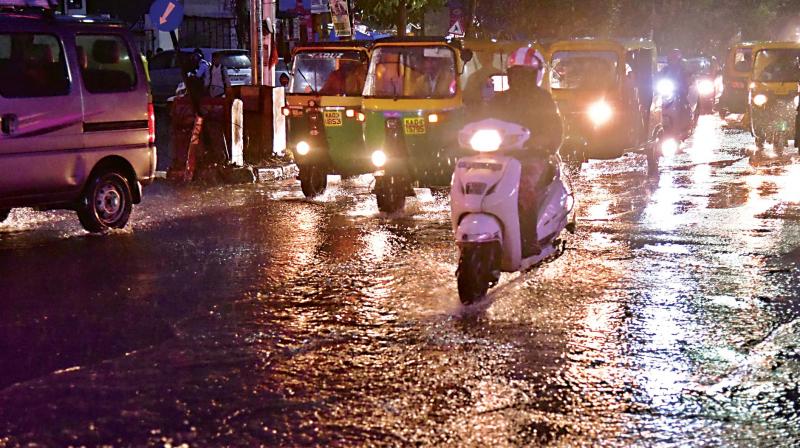Flood lessons: Water utilisation the key

In the road to development and to integrate the rising crowd in urban landscapes, expansion and encroachment of water retention points has become common for the past few years. Urban floods is characterised by reduction in water retention points and lack of open spaces for water runoffs. The need of the hour is to ponder over how water should be cleared at the earliest.
As a conventional solution to the issue of flooding, Bengaluru engages in widening /deepening of the drain networks. However, a study titled- ‘Pluvial flood modelling for Bengaluru city' has proved that this conventional thought has seen no significant improvement to reduce flooding.
Speaking to DC, Ramesh K Banagar, a water resources & environmental engineer said, “The conventional thought of deepening or widening the drain network, as a solution for urban flooding, is not an efficient approach and the study proves that it has no significant improvement. Unfortunately, this is the principle that is being followed in Bengaluru.”
Explaining the scenario, he said terrains have low lying areas that are initially filled with runoff water even before it reaches the drain. The water here stagnates and therefore, it may not always reach the drain thus, leading to flooding in the region. He emphasised that this issue cannot be tackled by widening/deepening the drain network alone. Instead, he advocated a 'Compulsive decentralisation of water resources management' such as rainwater harvesting by every household (not only for upcoming buildings) in a watershed as this would not only reduce runoff and flooding but also result in effective utilisation of rainwater. “Flood risk is not only restricted to rivers, but is also related to internal draining issues,” said Hrushikesh Sandhe, PE LEED AP Director, Walter P Moore, India. In his presentation about their engagement in combating urban floods, he said, “Water harvesting is effective for on-site runoff control. He advocated installing tanks with additional volume capacity which can be used for on-site non-potable water demands while controlling runoff.”
Speaking about the status of local regulations, Hrushikesh said there is a bill for floods, encroachment, saving water retention, etc., which are now at various stages of discussions. However, the problem is that they are not coming out. “There is a lack of enforcement, lack of implementation and lack of monitoring. However, the positive side to this is that, nobody is stopping anybody from coming up with research, or implement ideas that help combat urban flooding.”
While urban flooding is emerging as a grave concern in the wake of rising water scarcity issues, an effective approach to make use of the runoff water is the need. Every household has to march towards saving the habitat from flooding.
Rajendra Singh, the Stockholm Water Prize Awardee said, 'Today’s water problems cannot be solved by science and technology alone. They are instead human problems of governance, policy, leadership and social resilience.'

